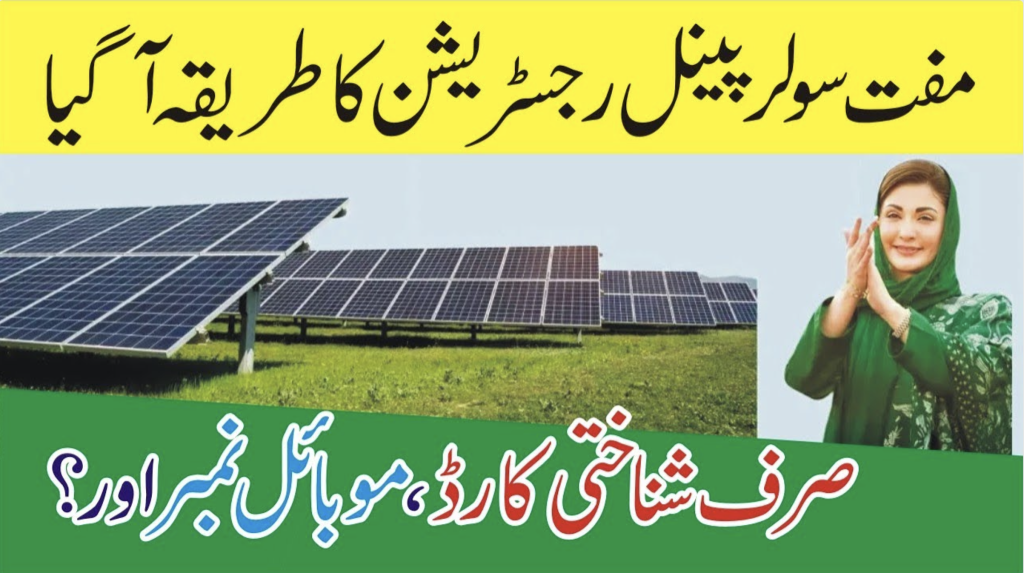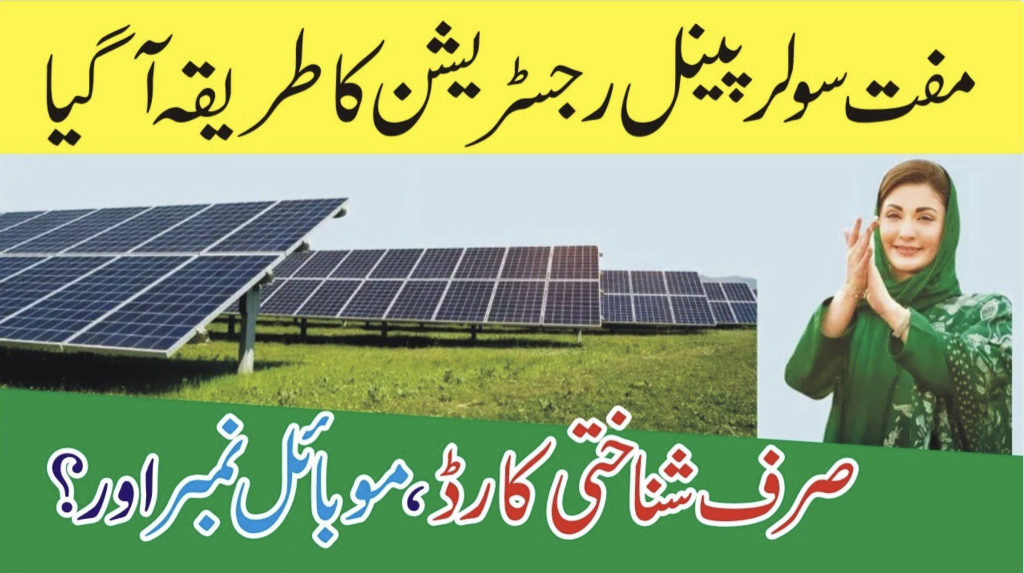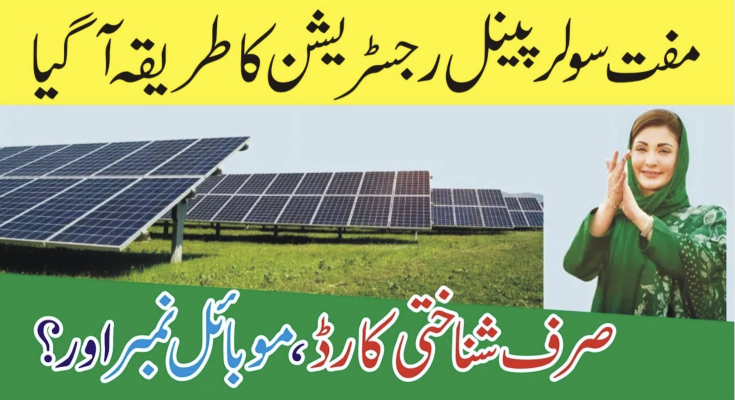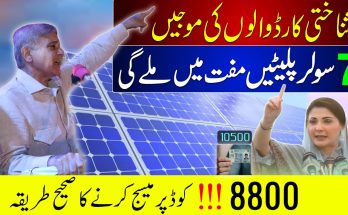The sun is a limitless source of energy that can be harnessed for free, and with increasing concerns over energy prices and environmental impact, solar power is gaining popularity as a sustainable energy solution. While the initial investment for solar panels can seem daunting, there are numerous programs and opportunities that make solar energy more accessible—sometimes even for free. Gov Solar Panel Scheme Online Registration
This article will delve into how you can potentially get free solar panels, explore government and utility incentives, and discuss alternative ways to reduce or eliminate the cost of installing solar systems.
1. Government Grants and Incentives for Solar Panels
In many countries, including the United States, various government programs offer financial incentives for individuals and businesses to adopt solar energy. These incentives can dramatically reduce the cost of solar panels, and in some cases, make them available at no initial cost through specific programs.

Federal Solar Tax Credit (ITC)
In the United States, one of the most significant programs available is the Federal Solar Tax Credit, also known as the Investment Tax Credit (ITC). While this tax credit doesn’t provide free panels upfront, it can help you reduce your tax burden by up to 30% of the total cost of installing solar panels. For example, if your solar installation costs $20,000, you could receive a $6,000 reduction in your federal tax liability. This can help alleviate the high upfront cost, bringing your effective cost closer to the free range over time.
State and Local Incentives
In addition to the federal tax credit, many states and local municipalities offer their own incentives, rebates, and tax credits. Some states have aggressive renewable energy policies that provide even more attractive financial assistance for solar energy adoption. For example:
- California offers the California Solar Initiative and the Self-Generation Incentive Program (SGIP) that provide cash rebates for residential and commercial solar installations.
- New York has programs like NY-Sun, which offers financial incentives for solar panel installation, with rebates that can cover up to 25% of the installation cost.
- Texas provides property tax exemptions for solar panel installations, which can help reduce the long-term cost burden.
By researching local incentives in your area, you may discover opportunities that can significantly lower the cost of installing solar panels.
2. Solar Power Purchase Agreements (PPAs) and Leases
Another option for getting solar panels at little to no upfront cost is through Solar Power Purchase Agreements (PPAs) or solar leases. These agreements allow homeowners to essentially rent their solar systems instead of purchasing them outright. Under these programs, third-party companies install and maintain the solar panels on your property, and you agree to pay them a fixed rate for the electricity generated by the system over a set period (typically 20-25 years).
How PPAs Work
With a PPA, you don’t own the solar system, but you benefit from the electricity it generates at a lower cost than you would pay to the utility company. The third-party solar provider typically takes care of all installation, maintenance, and monitoring of the system, so you don’t have to worry about any of the technical aspects.
Since you don’t own the system, you won’t benefit from tax credits or incentives directly, but you may still see significant savings on your monthly energy bills. In some cases, the savings can be large enough to offset your electricity costs, meaning your energy could effectively be “free” after a few years.
Solar Leasing
A similar option is solar leasing, which operates in a comparable fashion. The major difference between a PPA and a lease is that with a lease, you pay a fixed monthly fee for the use of the solar system rather than paying for the power generated by the system. However, both options usually come with the benefit of little to no upfront cost for installation.

While PPAs and leases do not directly provide “free” solar panels, they allow you to take advantage of solar energy without having to bear the upfront installation costs. Be sure to thoroughly research the terms and conditions of any PPA or lease agreement, as there can be hidden fees or costs that may outweigh the savings from switching to solar energy.
3. Non-Profit Organizations Offering Solar Assistance
Some non-profit organizations focus on providing solar energy to low-income households or communities that may not be able to afford the upfront cost of installation. These organizations often partner with solar companies or receive donations to fund solar installations for qualifying individuals or groups.
Solar United Neighbors
One such non-profit is Solar United Neighbors, which is committed to helping communities adopt solar energy through cooperative programs. They help organize group-buying programs, where multiple homeowners or businesses in a particular area can negotiate better prices with solar installation companies. In some cases, they also assist with access to financial incentives and grants to lower costs.
Grid Alternatives
Another excellent example is Grid Alternatives, a non-profit that provides solar installations to low-income households. This organization works with local governments, solar companies, and volunteers to install solar systems at little or no cost for qualifying individuals. Grid Alternatives focuses on making solar energy accessible to communities that typically struggle with the initial investment costs.
While these programs primarily serve low-income or underserved populations, it’s worth reaching out to such organizations in your area to see if you qualify for assistance.
4. Crowdfunding and Solar Sharing Programs
Crowdfunding is a modern way to gather financial resources from friends, family, or even strangers who support your goal of installing solar panels. Websites like GoFundMe or Kickstarter can be used to create campaigns that ask for donations to fund your solar installation.
In some instances, you can also find solar sharing programs, where individuals or communities pool their resources to invest in larger solar installations that are then shared among members. This approach is ideal for people who might not be able to install solar on their own properties due to space or other restrictions but still want to participate in solar energy initiatives.
5. DIY Solar Panel Kits
For the more technically inclined, DIY solar panel kits offer another way to reduce the cost of installing solar systems. While these kits typically still require a financial investment, they can significantly reduce the overall cost compared to hiring a professional solar installer.
With a DIY kit, you are responsible for the installation, but the savings come from doing the work yourself. Additionally, some kits come with flexible payment plans or financing options to make them more accessible.
6. Is it Really Free?
It’s important to note that while the term “free” solar panels is appealing, the reality is that most options to obtain solar panels at no upfront cost still involve some form of ongoing payment or cost. Whether through a PPA, lease, or donation, the energy generated by solar panels is rarely entirely “free.” There are also maintenance and monitoring costs to consider, especially with PPAs or leases.
However, through various government programs, non-profit initiatives, and innovative financing options, it is possible to significantly reduce the cost of installing solar panels—making them more accessible to those who might otherwise be unable to afford them.
Conclusion
While you might not be able to walk into a store and pick up free solar panels, there are many ways to make solar energy more affordable. Government tax credits, solar purchase agreements, non-profit programs, and crowdfunding can all contribute to reducing or eliminating the upfront costs of solar panel installation. As the world moves toward cleaner, renewable energy sources, more opportunities will likely emerge to make solar energy accessible to all.
ONLINE APPLY
If you’re considering solar energy for your home, it’s essential to explore all available options in your area and take full advantage of incentives and assistance programs that can help make your solar dream a reality—perhaps even at little to no cost.

